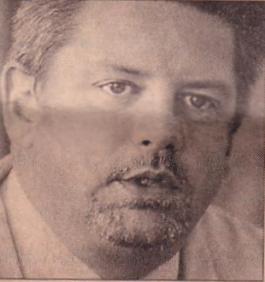|
The
last UK-owned volume carmaker is beset by questions about its viability,
says John Griffiths
If,
as a lot of industry sceptics still insist, MG Rover is heading
inexorably for a financial brick wall. Britain's maverick independent
car company will hit it at speed and with style.
.
The
first customers are about to take delivery of the MG SV,
a £75,000 Porsche-challenging supercar packing 320 horsepower
from a Ford-supplied V8 engine. This will be followed by another
Ferrari-frightening version with 465bhp. Wave enough extra cash
under the nose of Jim Johnson, director of the Group's MG Sport
and Racing subsidiary and a customer can have up to 750bhp. For
those suffering Concorde withdrawal, a nitrous oxide injection system
has the car nudging 1,000bhp.
. A few weeks ago, on Bonneville salt
flats in Utah, an MG Rover flashed by through the timing lights
at 225mph. An SV undergoing the ultimate "road" test"?
Well no; in fact that one was a souped up version of the Company's
MG ZT-T estate car. Done just for fun, of course . . . .
. Simultaneously with the SV, deliveries
are starting of the MG ZT saloon and estate cars, re-engineered
from the front wheel drive model to rear wheel drive and fitted
with nearly five litres of V8 power. Kevin Howe, chief executive,
makes no secret that its principal target is the best and fastest
that BMW - MG Rover's former owner - can offer.
|
In
short, MG Rover, under a rakish corporate slogan "outrageous
fun for all" is revelling in the reputation it has acquired
since independence as an automotive mouse that roars.
. Its unashamedly macho advertising
campaigns make the Advertising Standards Authority twitch. It
has seriously embarrassed some of the World's biggest car makers on
the track, from the British Touring Car Championship to le Mans. Only
last week it revealed to a wide-eyed Motorsport Industry Association
Conference, a petrol/electric prototype developed in secret with the
UK's Motor Industry Research Association and a project that hitherto
has been the province of big carmakers such as Honda and Toyota.
. So Mr Howe - his own helmet and race
overalls tucked discreetly in a corner of his office after an SV testing
session - sighs wearily when the question is raised yet again as to
whether MG Rover really can survive as a small fish in a car industry
ocean of big sharks prowling ever more ravenously for market share.
. His unequivocal
answer is that MG Rover will indeed get by - albeit with a little
help from Indian and Chinese friends. Critics have been proclaiming
MG Rover's imminent demise almost from the day in May 2000 that John
Towers and his Phoenix consortium of Midlands business handed over
£10 to BMW, |

receiving in return the Longbridge car company, £520m
in ultra-soft loans to keep it going - and control over the destinies
of 5,000 disillusioned and apprehensive West Midlands workers.
. MG Rover confounded critics, says
Mr Howe, by moving the entire production line for the Rover 75 from
what is now BMW's Mini plant near Oxford to Longbridge, with no
loss of quality. It went on to engineer and launch its MG "family"
of cars based on the Rover 75 and the smaller Honda-based 45 and 25
saloons and hatchbacks. Along the way it laid the groundwork for the
SV "supercar" business by buying up Qvale, a US-Italian
luxury sports car maker.
. In November, MG Rover will launch the
City Rover, an Indian-built cheap "super-mini" being
supplied under a partnership with Tata, the Indian conglomerate, which
MG Rover expects to sell at a rate of 40,000 units a year. By the
middle of next year the Rover 75 and MG ZT and other products will
have received facelifts. But the questions about MG Rover's viability
persists, and are inevitable.
. During the three years since independence
Mr Howe and his colleagues have certainly succeeded in cutting the
losses that piled up under BMW. In 1999, the last year of BMW
ownership, what was then the Rover Group chalked up a loss of £786m
(although about £250m of that was accounted for by Land Rover,
sold off separately to Ford). In 2000, Phoenix Venture Holdings, the
parent holding company of |
which
MG Rover makes up by far the largest part, made a loss of £378m.
By 2001 it was down to £187m and in the 2002 statement
to shareholders, issued last week, the loss fell again to £95m.
. But behind the improvement lies
a tale of missed targets. On original calculations, the group
would have broken even in 2002, with the first profits coming in during
the current year. Instead, acknowldeges Mr Howe, there will be another
loss - although smaller again. The improvement at MG Rover, as a carmaker
pure and simple, is also not quite as good as the holding company
figures suggest. The loss on carmaking last year was £111m,
down from £175m a year earlier. Profits from the Powertrain
engines subsidiary and leasing other marginal activities helped Phoenix
as a group.
. But the past year has brought several
setbacks. The collapse of a strategic alliance with the troubled China
Brilliance group, under which the partners would have jointly developed
Powertrains and cars, then shared the global marketplace, has left
MG Rover with the task of bringing to market on its own a desperately
needed successor to its Rover 45/MG ZS range. That process will be
financially painful. MG Rover was also given a head start by BMW in
that production facilities, tooling and development
costs of most of the current cars came
free of charge. |

The
new mid-size car will also save a large chunk of development costs
by using an adapted Rover 75 platform. But the final bill for the
new car will certainly be in excess of £100m.
. The
double whammy
on Rover's medium car project has been the fall into receivership
of entrepreneur Tom Walkinshaw's TWR,
the Oxfordshire engineering consultancy to which development work
on the mid-sized car had been transferred. MG Rover's engineering
staff are still extracting what data and other work in progress they
can via the receivers.
. As a result of these blows, far from
the new car coming to market in the middle of next year, as originally
projected, it is now likely to be at least halfway through 2005 before
it can start generating cash.
. In terms of cashflow at least, MG
Rover has so far kept its head well above water. The Group's cash
balance has remained above £300m for each year of independence,
after meeting all development and other costs. From now on however,
the Company can now longer count on funds from BMW; the third and
final £77m tranche was paid over in 2002. With more than a year
and half to run before the new mid-sized car emerges, and further
development costs still to be paid, MG Rover can no longer afford
another serious reverse, says Prof Garel Rhys, Cardiff Business School's
motor industry expert. "But the China Brilliance episode could
have been far worse", he says. "The company is still cash
positive and should have the funds to |
complete
the new car".
. Mr Howe himself acknowledges that the
drain MG Rover's losses are exerting on the Group's still substantial
cash resources is becoming more uncomfortable, and the need to
start generating profits increasingly urgent. In pursuit of that goal,
"the next two years until the launch of the new medium car will
be a period of rigorous cost and cash controls", says Mr Howe.
Inevitably, exchange rate considerations mean that more of MG Rover's
component purchases are being made abroad - bad news for some of the
400 plus UK suppliers who still account for about 70% of the Group's
annual components and services spend.
. But while a decade or two ago a big
purchasing shift would have been a severe blow to the West Midlands
economy, the steady shrinkage of MG Rover's output - to about 150,000
units from 500,000 - means that few suppliers are overwhelmingly
dependent on what was once British Leyland, then a state owned group.
"Given its history, we've long since learnt not to put all our
eggs in one basket" says one supplier. One widely aired worry
among suppliers when BMW jettisoned MG Rover - its ability to pay
its suppliers' bills - appears to have faded long since. Nevertheless,
the delay surrounding the mid-sized car is leading some to express
apprehension about making any sizable |

investment
of their own in component develop-ment or tooling.
. Mr Howe claims that critics of the
Group are undervaluing a number of positives, not least that a
long sales slide appears to have been arrested. MG Rover had total
sales last year of 140,00, down from 170,000 a year earlier. This
year's sales are running at close to last year's level, however, even
before the Tata-built CityRover goes on the market next month. Of
last year's sales, all but 7,000 were within the UK and continental
Europe. So this year the Company has been entering or re-entering
a number of markets, including Japan, Mexico and New Zealand.
. There are several other initiatives
under way; negotiations are continuing with Tata on how the partnership
might be broadened to take in other vehicles, and an agreement with
Phoenix, MG Rover's parent, to distribute Tata vehicles has already
been concluded. Insiders say a pact with another Chinese partner,
allowing MG Rover to share vehicle development and gain access to
China's new car market, is also claimed to be in the final stages
of negotiation.
. With profits coming from the Powertrain
engine business, and the prospect of expanding its XPart and AutoService
Centre, senior executives argue that there is no reason to think MG
Rover will not survive.
The sharks, meanwhile, can afford to circle and
wait.
This article
first appeared in the Financial Times on Wednesday 29th October 2003.
It is reproduced here with the kind permission of the author John
Griffiths (30.10.03). |

"Two years until the launch of the new medium car will be
a period of cost and cash controls" - Kevin Howe, Chief Executive,
MG Rover. (Photo: FT)
Banner
photo - the new MG SV. John Griffiths says "I have rarely
known a car - outside the Avantime VelSatis - to divide opinion so
completely on looks. I'm afraid I regard it as a genius, brutal piece
of styling differentiating it from the supercar pack like few others".
(Photo: FT)
Footnote
10th January 2004: Subsequently
MG Rover has seen the launch of the new Rover City model but has unfortunately
suffered badly from adverse publicity of a senior management benefits
package, with reduced sales volumes.
The launch of the MG ZT 260 V8 in both saloon and estate versions
has been very well received by the motoring press. |
|
